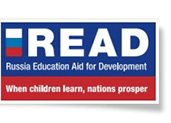Next month, at the Annual Meetings of the International Monetary Fund (IMF) and the World Bank Group in Bali, Indonesia, the World Bank will reiterate to key stakeholders that investment in human capital is crucial for economic development.
Central to the World Bank’s motivation for the Human Capital Project (HCP) is evidence that investments in education and health are smart investments for a country to make as more educated and healthier individuals produce higher economic growth as well as experience improved individual well-being, increased intergenerational spillovers and expanded societal benefits. To measure the results of the HCP, Human Capital Index (HCI) will provide information on productivity-related human capital outcomes, seeking to answer: “How much human capital will a child born today acquire by the end of secondary school, given the risks to poor health and education that prevail in the country where she was born?”
The HCI seeks to measure the productivity of a future worker using information about the current state of health and education outcomes. While most internationally-comparable data on education hasfocused almost exclusively on quantity (as measured by average attainment levels), the innovation of HCI is in combining this type of information with a measure of countries’ education quality, producing qualityadjusted years of schooling. Specifically, the quality of education reflects new work at the World Bank to harmonize student assessment scores, including from major international and regional student assessment programs (such as PISA, TIMSS and PIRLS, LLECE, SACMEQ, and others). The inclusion of student assessment data in HCI highlights that measuring student learning outcomes lies at the forefront of human capital development policy. Large-scale, system-level student assessments are designed to provide policy-relevant information on the performance of the education system and any related or contributing factors. These assessments seek to answer questions such as: How well are students learning at various levels in the education system? Are there any strengths and weaknesses in students’ knowledge and skills? Do certain subgroups in the population perform more poorly than others? What factors are associated with student achievement? and How do the achievements of students change over time, given changes in the education system?







